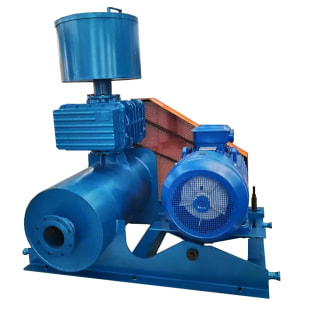Your Position: Home - Blower - FAQs | Everything You Need To Know About Roots Blower
A Roots blower pump is a positive displacement rotary lobe pump that functions by moving fluid using a pair of meshing lobes, similar to a set of elongated gears. The fluid gets trapped in pockets around the lobes and is transported from the intake side to the exhaust side.

The rotary lobe blower is named a "Roots Blower" after the Roots brothers, Francis and Philander, who designed this positive displacement blower in the 1850s. They patented their invention in 1860, and thus the Roots name became synonymous with the design.
The basic principle of a Roots blower involves the following steps: air flows from the inlet port into the element chamber. The rotors, timed to rotate against the chamber wall, create a directional air flow. Initially, the pressure within these chambers remains at atmospheric levels.
When the first lobe reaches the pressure side opening, the system pressure adjusts, known as isochoric compression. The rotors effectively seal each other off internally, maintaining a constant pressure.
Suggested reading:A Roots blower operates on the principle of isochoric compression, also referred to as external compression. It increases pressure by intermittently moving a gaseous medium, such as atmospheric air, into a system.
By pushing the medium from atmospheric conditions into a system with specific resistance (e.g., a water column or distribution network), the blower achieves the desired pressure increase. The Roots blower is designed to operate at a controlled output level to overcome this resistance.
The Robuschi "Roots Blower," known as the RBS series, consists of three conjugate lobe-shaped rotors that rotate within a pre-machined chamber. The chamber is sealed by these rotating rotors, synchronized using a 1:1 gear ratio positioned at the shaft ends.
Externally located bearings support the compression chamber, utilizing an oil-lubricated system. The drive shafts feature labyrinth-style oil seals, named for the intricate grooves that the oil must traverse. This splash lubrication system uses a fine mist of oil to ensure efficient lubrication.
92
0
0
Previous: None
Next: none
Comments
All Comments (0)